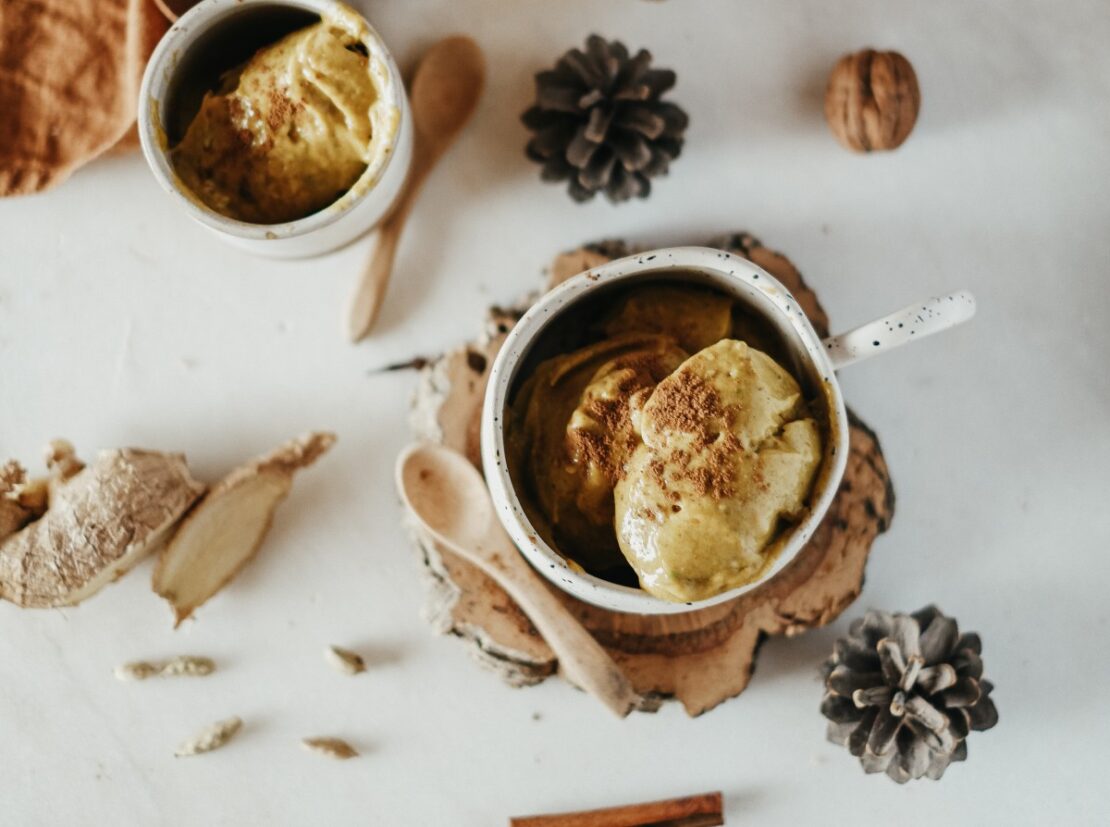
Fall in Love with Our Delicious Pumpkin Spice Nice Cream!
Come autumn, come pumpkin pie spice. As we transition into crisp autumn days, slanted golden light, apple season, and sweater weather, our food, herb, and spicing choices shift accordingly. You may be bombarded with pumpkin spice everything at groceries stores as well as your local coffee shop. While pumpkin spice lattes have become a seasonal favorite, there are a plethora of other ways to enjoy and benefit from the delicious and supportive spices in a pumpkin pie spice blend. This nice cream recipe is a vegan ice cream made from nutritious plant-based ingredients, beneficial spices, and whole foods. It features tasty pumpkin pie spices, as well as pumpkin puree, offering sweet nostalgia and solid nutrition all in one creamy scoop.
Pumpkin Spice Nice Cream Ingredients
One beautiful aspect of this recipe is that it satisfies the desire for ice cream, but because it is made with healthy, wholesome ingredients (and no added sugar!), your body feels good afterwards—and taste and enjoyment are not compromised. Let’s check out some of the healthful ingredients in this easy-to-make nice cream recipe.
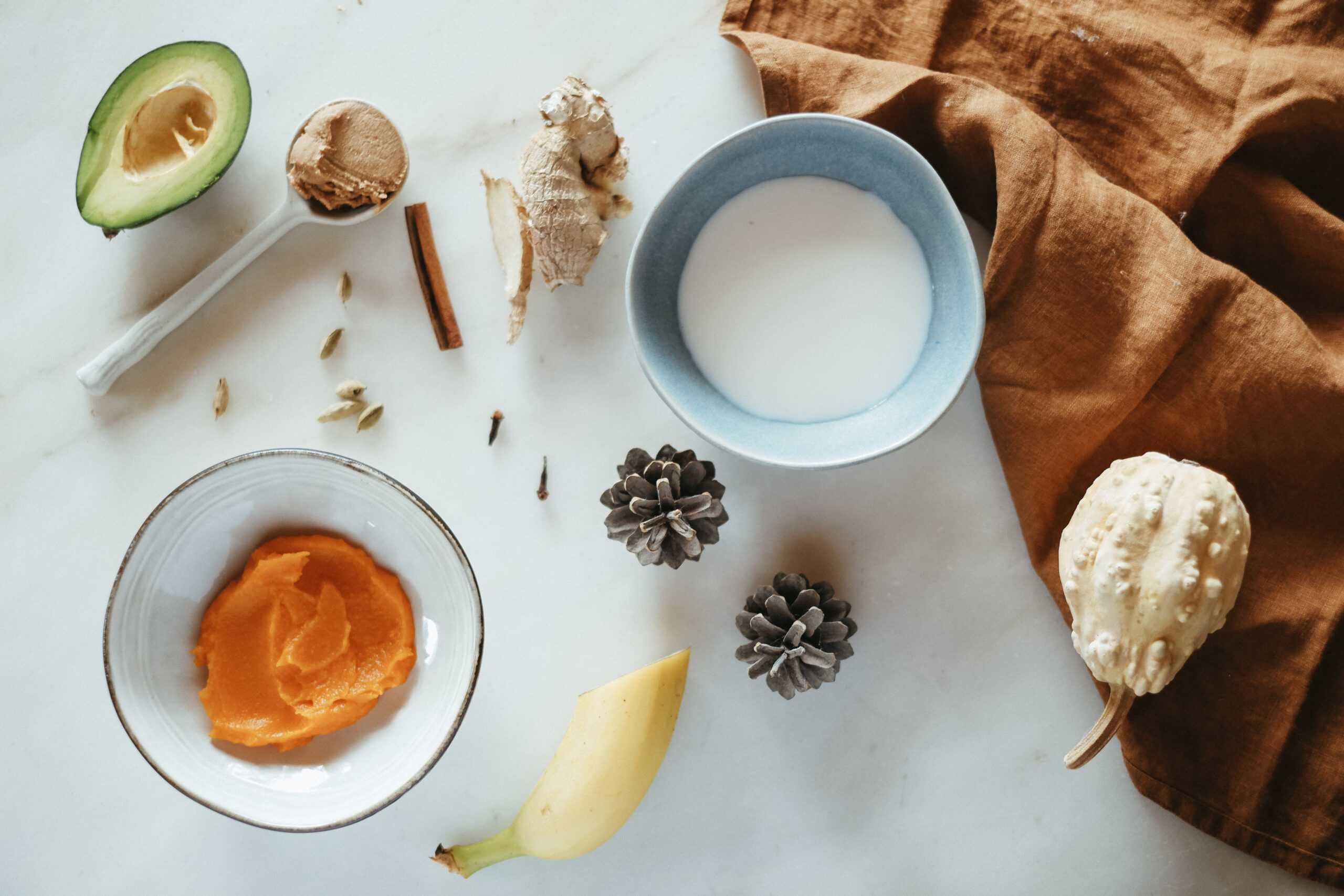
Banana
The term “nice cream” refers to vegan ice creams made using a base of banana. Blending frozen bananas creates a creamy, smooth texture that genuinely matches that of ice cream. Of course, you get the added advantage of enjoying the health benefits that bananas offer. Bananas are rich in fiber and are considered prebiotic, meaning that they support the proliferation of beneficial gut bacteria because they possess a plant fiber that can in fact only be consumed by helpful gut bacteria (Enders, 2015). An ice cream that is tasty and gut friendly? Now we know why they call it “nice cream!”
Pumpkin
More than a charming fall decoration, pumpkins are remarkably nutritious. Pumpkins are a rich source of fiber and carotenoids, contain a wide range of vitamins and minerals, and may be useful in balancing blood sugar (Pitchford, 2002; Batool et al., 2022). According to Chinese medicine, pumpkins are cooling, sweet, and slightly bitter (Pitchford, 2002). Ayurveda teaches that pumpkin is a sattvic food, meaning that it does not cause physical or mental agitation (Morningstar, 1995).

Avocado
According to Ayurveda, avocado has a cooling energy and an overall tonifying or nourishing effect on the body (Lad & Lad, 1997). Avocado is an especially good food for summer and early autumn because its cooling nature helps dispel any energetic heat buildup from summer. Also, avocados are fatty and nourishing, making them a beneficial food to prepare the body for the harshness of winter. Though quite fatty, avocados are rich in monounsaturated oils (which are generally considered more heart-healthy than saturated and trans fats) and are typically well-tolerated even by those who don’t digest heavy, oily food well (Pitchford, 2002). Furthermore, avocados are rich in fiber, as well as minerals, vitamins, and carotenoids, which may be one reason why they are considered a good food for skin health (Harvard T.H. Chan School of Public Health, 2022).
Cinnamon (Cinnamomum spp.) bark
Cinnamon is a commonly used baking and cooking spice, but there is nothing common about what it can do for your body! Cinnamon offers benefits to the circulatory and digestive systems, stimulating both circulation and digestion, and is a rich source of antioxidants (Dass, 2013; Palanisamy, 2015). Pleasantly warming and slightly sweet, cinnamon has anti-inflammatory effects, and helps balance blood sugar levels, making it helpful for metabolic and hormonal balance. In fact, cinnamon may be used to ease PCOS (polycystic ovary syndrome). In addition, cinnamon has antimicrobial properties as well as gently warming energetics, making it a spice superstar for fall (Palanisamy, 2015).
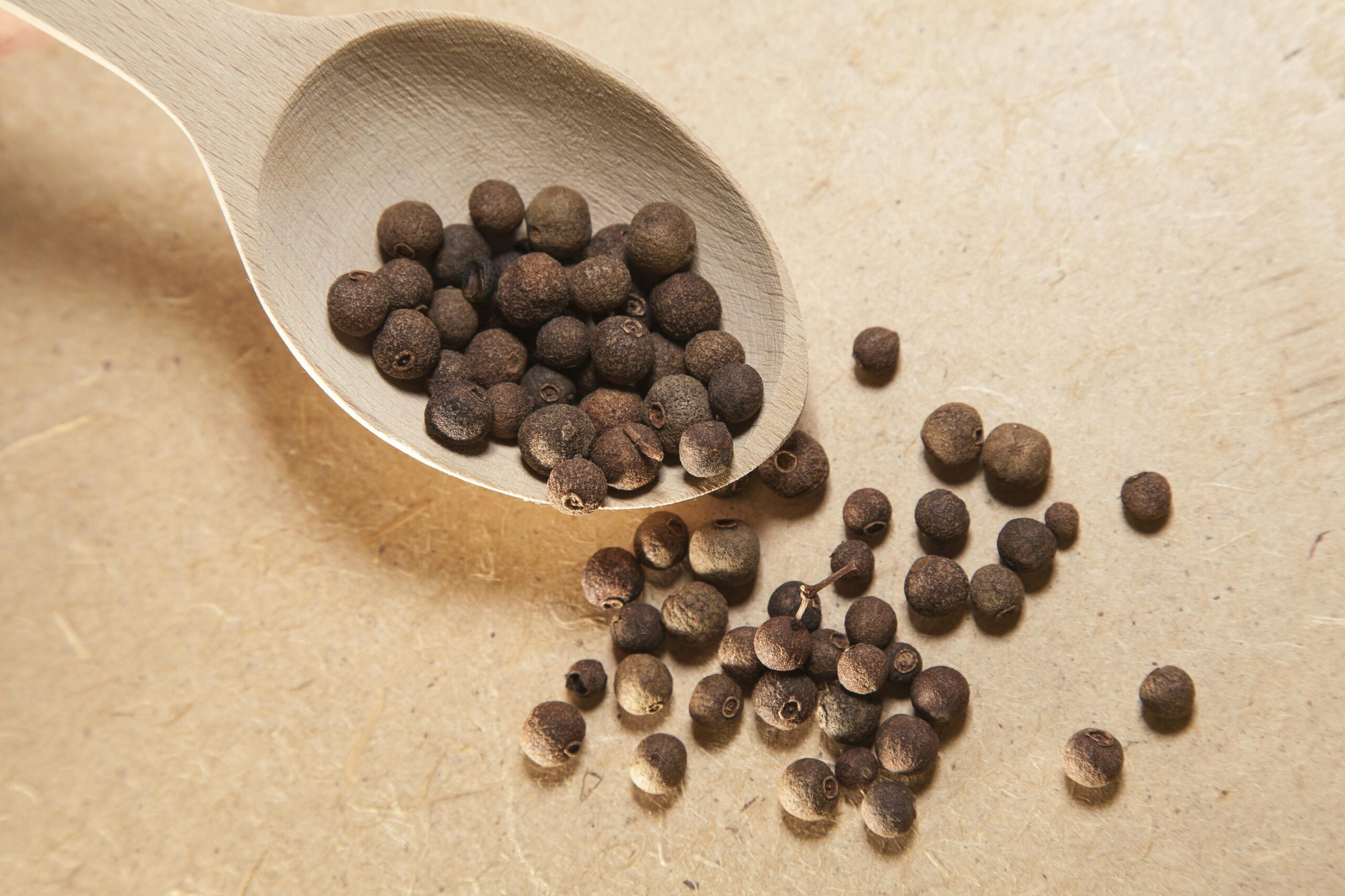
Allspice (Pimenta dioica) berry
A notable spice in Jamaican cooking, allspice is named for its flavor, which resembles a number of other spices, such as clove, nutmeg, and cinnamon. However, allspice is not a combination of spices, but rather a flavorful, beneficial spice unto itself. Useful in seasoning both sweet and savory dishes, allspice boasts a wealth of antioxidants, including quercetin, and has antiviral and antibacterial properties. Traditionally, allspice is also used to regulate the menstrual cycle, and it may assist with blood pressure balance (Palanisamy, 2015).
Ginger (Zingiber officinale) rhizome
If you are looking for a multi-use plant ally that is a must-have in your spice cupboard and herb collection, look no further than ginger. In Ayurveda, ginger is known as vishwabhesaj or “universal medicine” because ginger does so much (Dass, 2013). Ginger is a go-to for digestive, circulatory, and cold/flu season support. It also has anti-inflammatory properties, making it useful for joint and muscle pain. Like cinnamon, ginger also has a balancing effect on blood sugar (Palanisamy) and is noteworthy for its ability to gently stimulate digestion and ease nausea.
Cardamom (Elettaria cardamomum) seed
Cardamom, commonly used in Indian sweet treats, is known amongst herbalists and ayurvedic practitioners as a carminative, meaning that it supports digestion in part by easing gas and bloating. Cardamom is often added to milky, heavy foods because it assists with the digestion of hearty fare, such as dairy (Dass, 2013). Cardamom and rose ice cream, anyone? Or better yet, how about Pumpkin Spice Nice Cream with cardamom! Cardamom is also considered to be a sattvic spice, due to its clarifying effects on the mind. This aromatic spice may increase pitta dosha when used in excess, but used in small amounts it refreshes the mind and supports digestion (Frawley & Lad, 2001).
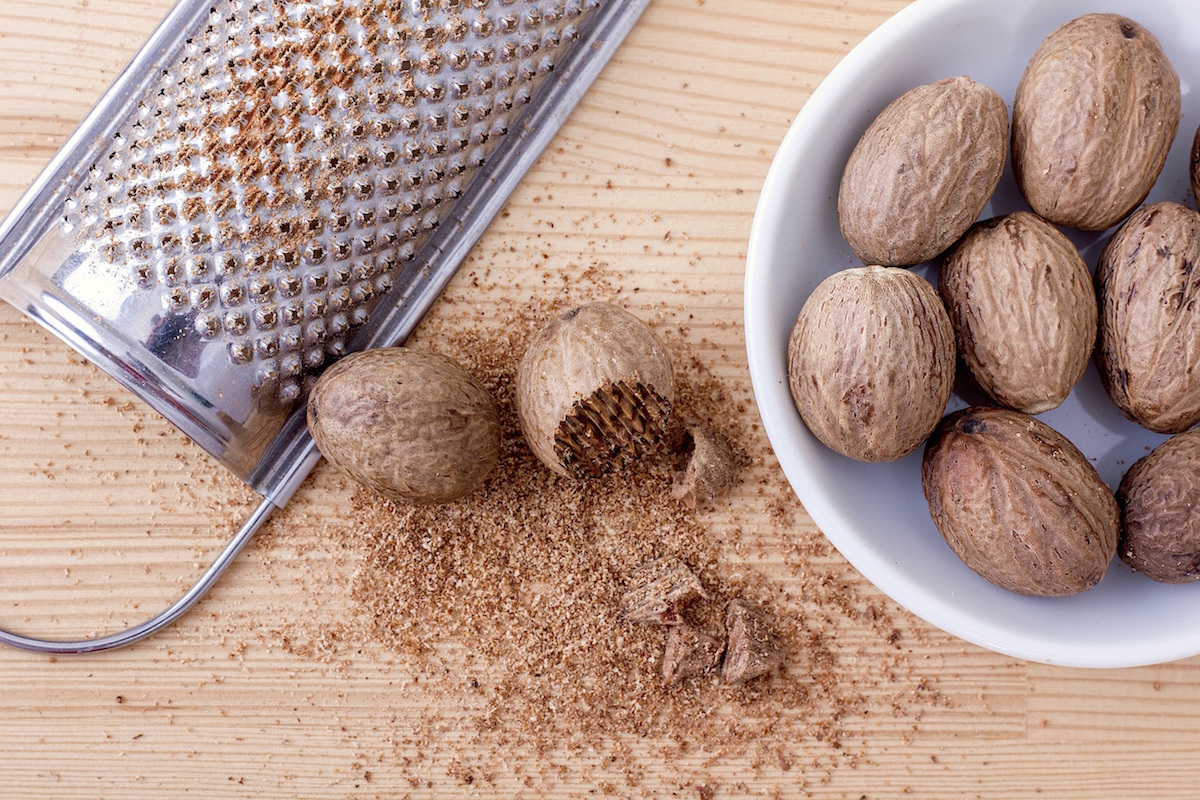
Nutmeg (Myristica fragrans) seed
Nutmeg, a popular holiday spice, is a carminative that is used by herbalists to calm gas and bloating and to promote healthy digestion and absorption. It also has a mild sedative effect and is therefore utilized before bedtime to assist with sleep (Dass, 2013). A bit of nutmeg grated fresh over a cup of warm golden milk is a nice way to ease into sleep. For a simple golden milk recipe, you may want to check out our article, To Tonify or Purify? That is the Question.
Clove (Syzygium aromaticum) bud
Often associated with the winter holidays, clove is an aromatic, heating, and stimulating spice and therefore best used in small amounts. That said, the benefits of cloves are many. These pungent little buds are useful for stimulating the appetite and for regulating variable digestion (Dass, 2013). Clove oil is traditionally used to quell toothache by way of its anesthetic properties. Cloves also stand out as a remarkably rich source of antioxidants and, in addition, have anti-inflammatory properties (Palanisamy, 2015).
Now that you know all about the nutritious ingredients in this Pumpkin Spice Nice Cream, let’s get to the recipe!
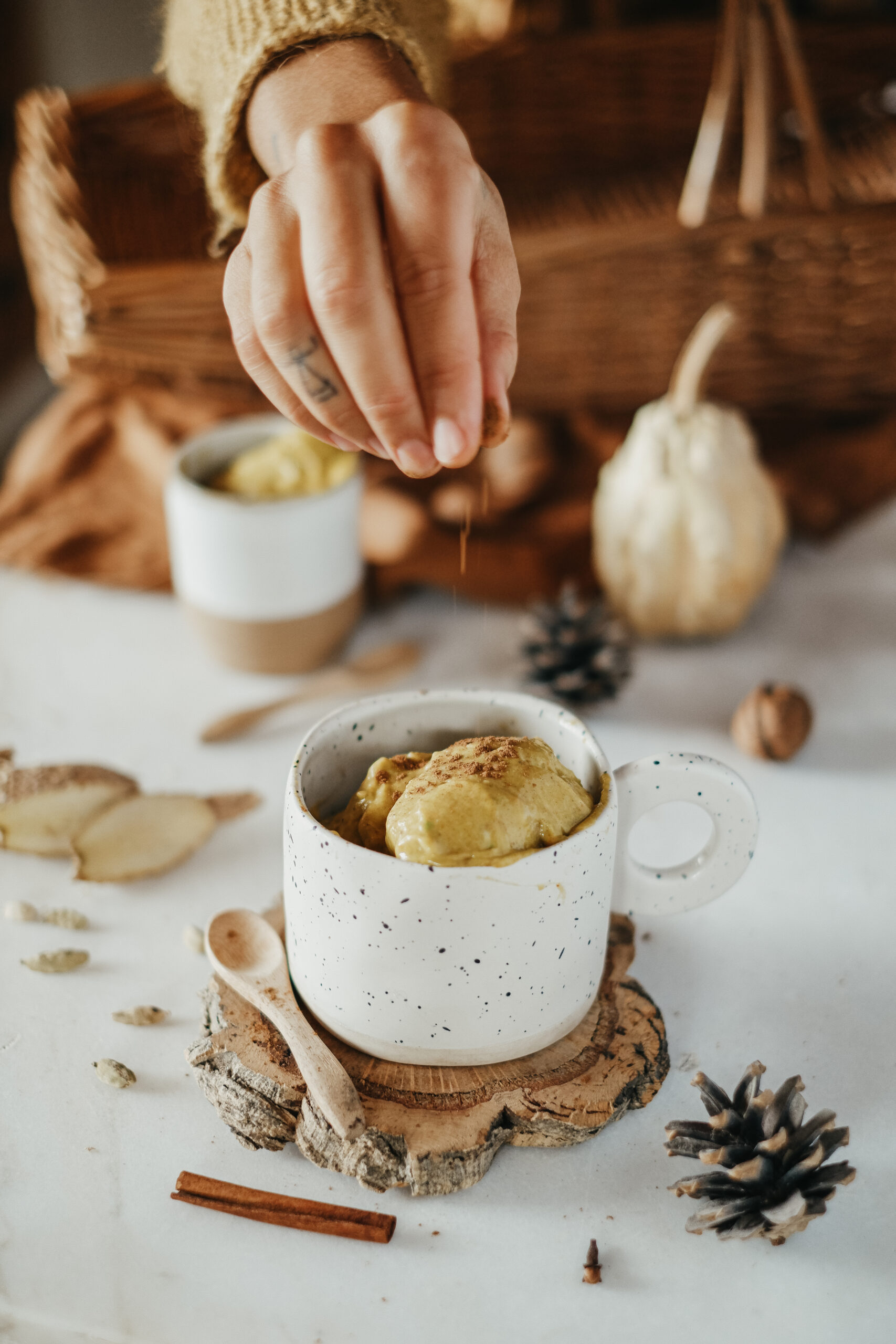
Pumpkin Spice Nice Cream Recipe
This nice cream features pumpkin and pumpkin pie spice. It is pleasing to the taste buds and nice on your gut. Eat alone or serve as a dessert, perhaps with a spicy ginger molasses cookie. A note to the chef: I listed each spice individually. However, if you prefer to use a pre-mixed pumpkin pie spice, substitute the individual spices for 1-2 teaspoons of pre-mixed pumpkin pie spice. Yield: 3-4 servings.
1/4 cup plant-based milk of choice
1/4 cup organic pumpkin puree
1 cup frozen banana chunks
1 cup frozen avocado chunks
1 tablespoon pumpkin seed butter, sunflower butter, or nut butter of choice
1 teaspoon vanilla (Vanilla planifolia) pod extract
¼ teaspoon cinnamon (Cinnamomum spp.) bark, ground
¼ teaspoon allspice (Pimenta dioica) berry, ground
¼ teaspoon ginger (Zingiber officinale) rhizome, ground
¼ teaspoon cardamom (Elettaria cardamomum) seed, ground
⅛ teaspoon nutmeg (Myristica fragrans) seed, ground
A tiny pinch of clove (Syzygium aromaticum) bud, ground
To Use:
Serve immediately to retain texture and ice-cream-like consistency. I like to scoop out with an ice-cream scoop to make this wholesome treat seem even more ice-cream-like. Add a dash of cardamom or cinnamon on top as a garnish, if you wish!
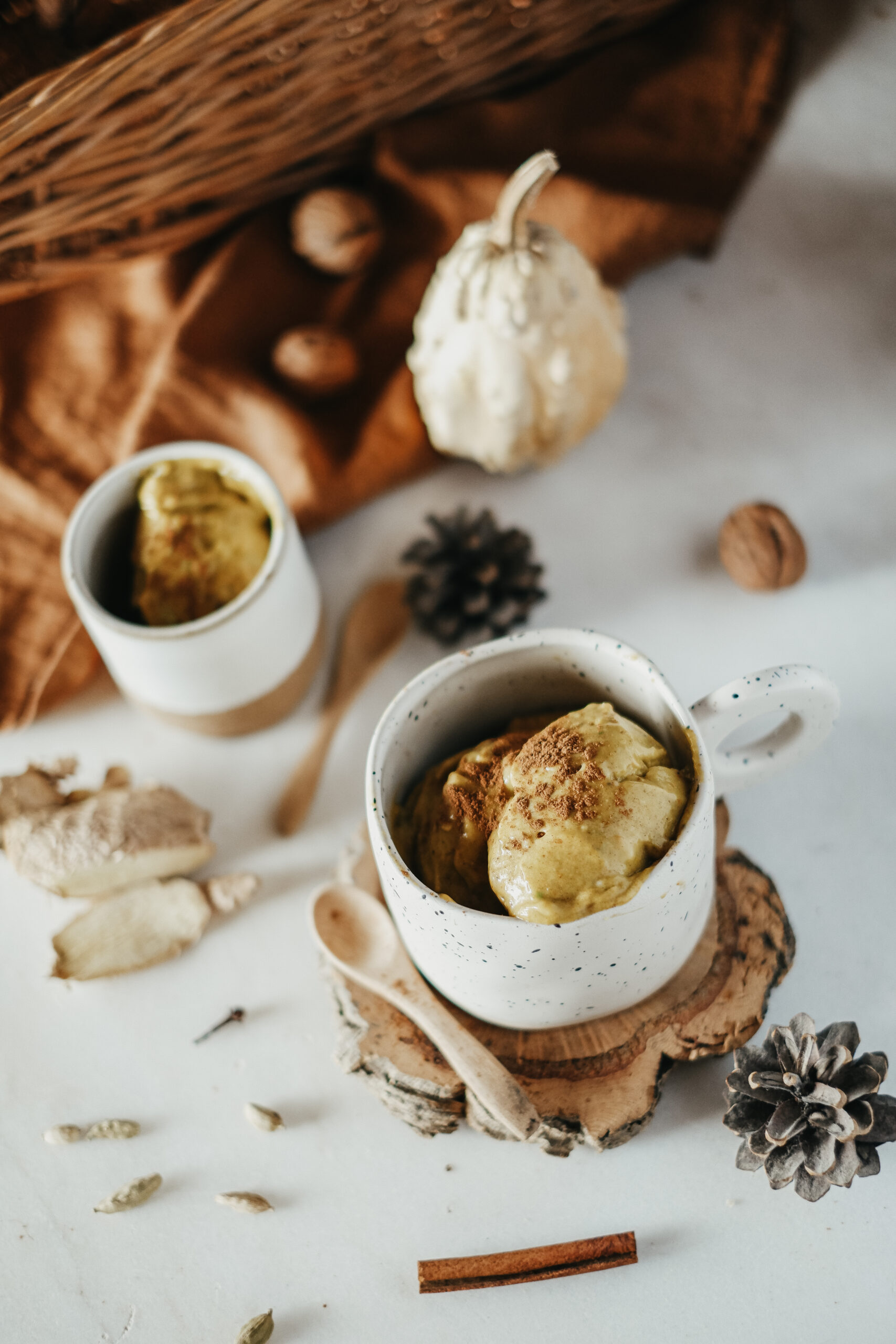
In Closing,
This deliciously spiced Pumpkin Spice Nice Cream is the perfect seasonal treat, and because it is so nutritious, it can truly be enjoyed as a small meal on its own. Yes, I do eat nice cream for breakfast on occasion! Or, serve this dish as a special dessert for friends and family—bet they’ll never guess the ingredients. Ice cream is lovely, but a homemade nice cream offers a plant-based option with the added value of healthful, whole foods ingredients along with warming, nutritive spices, making it an ideal autumn confection.
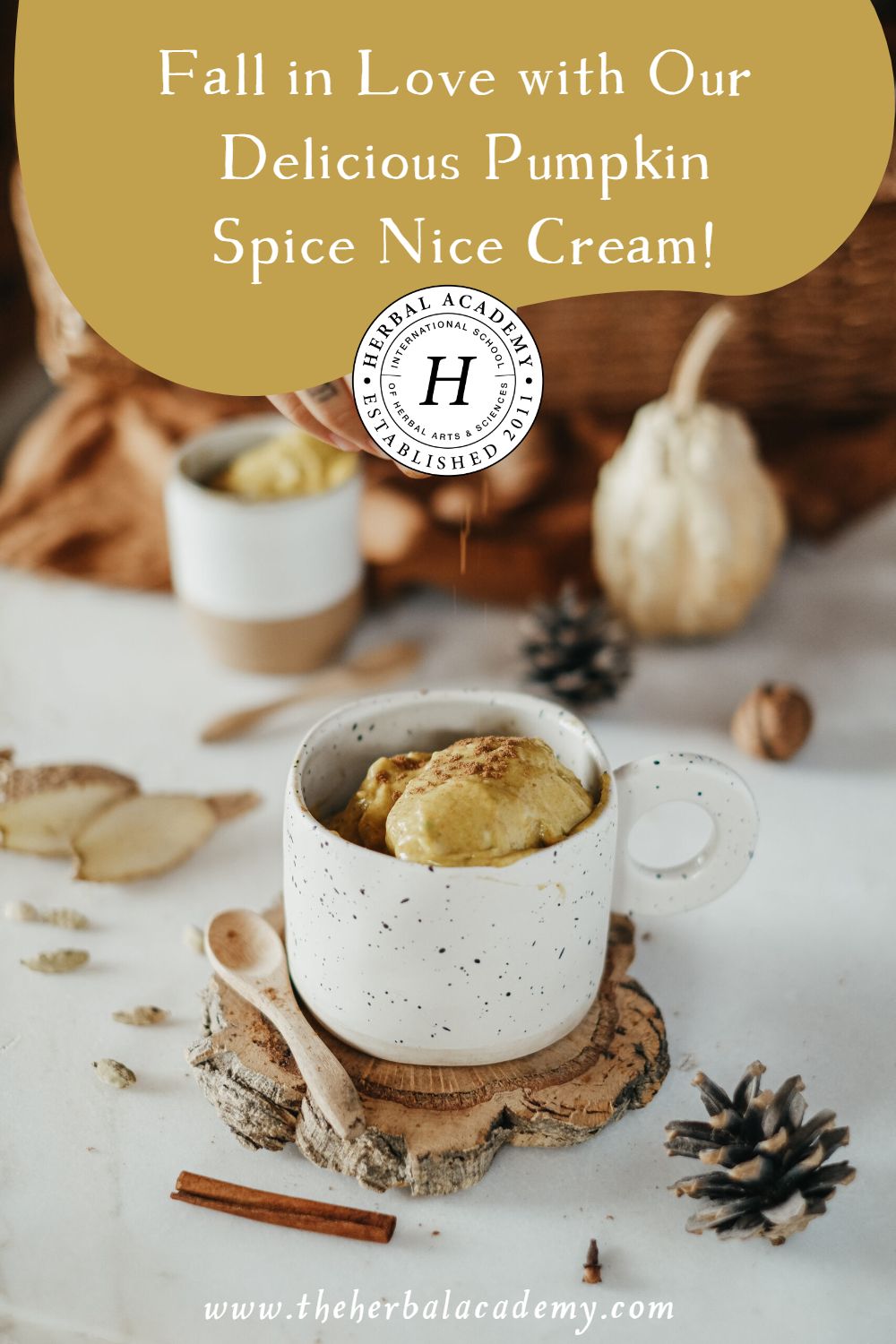
REFERENCES
Batool, M., Ranjha, M.M.A.N., Roobab, U., Manzoor, M.F., Farooq, U., …Ibrahim, S.A. (2022). Nutritional Value, phytochemical potential, and therapeutic benefits of pumpkin (Cucurbita sp.). Plants, 11(11), 1394. https://doi.org/10.3390/plants11111394
Dass, V. (2013). Ayurvedic herbology East & West: A practical guide to ayurvedic herbal medicine. Lotus Press.
Enders, G. (2015). Gut: The inside story of our body’s most underrated organ. Greystone Books.
Frawley, D. & Lad, V. (2001). The yoga of herbs (2nd ed.). Lotus Press.
Harvard T.H. Chan School of Public Health. (2002). Avocados. The Nutrition Source. Retrieved from https://nutritionsource.hsph.harvard.edu/avocados/#:~:text=Source%20Of,-Fat%20
Lad, U., & Lad, V. (1997). Ayurvedic cooking for self-healing (2nd ed.). The Ayurvedic Press.
Morningstar, A. (1995). Ayurvedic cooking for westerners: Familiar Western food prepared with ayurvedic principles. Lotus Press.
Palanisamy, A. (2015). The paleovedic diet: A complete program to burn fat, increase energy, and reverse disease. Skyhorse Publishing.
Pitchford, P. (2002). Healing with whole foods: Asian traditions and modern nutrition. North Atlantic Books.









